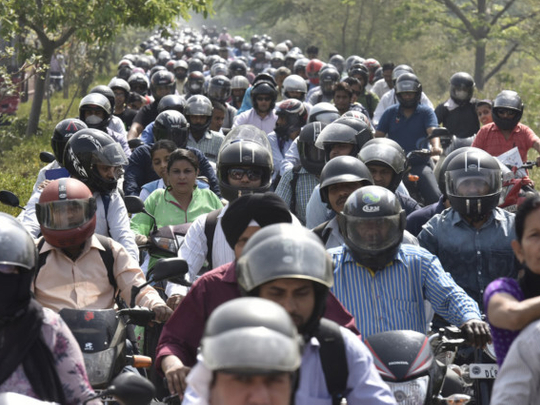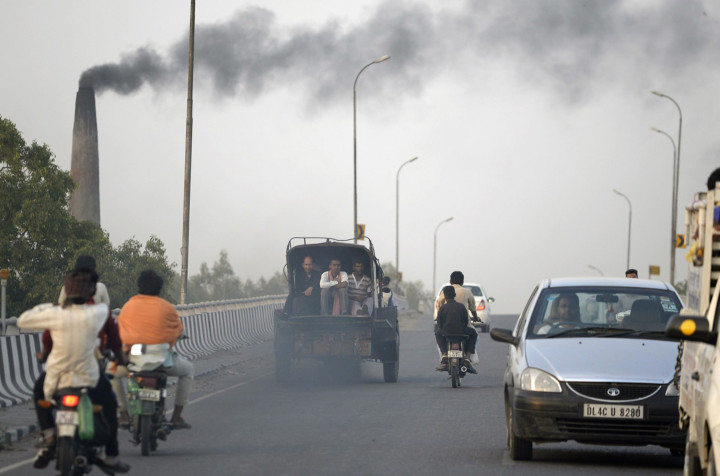
Rajghat
‘It’s a lucky charm,” says Rajesh, pointing to the solar-powered battery in his window that he has smeared with turmeric as a blessing. “It has changed our life.”
He lives in Rajghat, a village on the border of Rajasthan and Madhya Pradesh states, and until very recently was one of the 240 million Indians who live without electricity. In the poverty that results, Rajghat has become a village of bachelors, with just two weddings in 20 years.
“No one wants to give their daughter to me,” says Sudama, another young man. “People come, they visit, but they see the conditions here and they leave.”
For now, the technology is proving most useful to Rajesh as a way to charge his mobile phone, saving a lengthy journey to the nearest city, but he also hopes for future benefits: “I’ll use this to let my children study.”
According to an ambitious pledge by India’s prime minister, Narendra Modi, every Indian will have electricity, and the education, health and business benefits that follow, by the end of 2018. But how Modi achieves that, and the development of what will soon become the world’s most populous nation, matters to the entire world.
‘Frontline state’
Of all the most polluting nations — US, China, Russia, Japan and the EU bloc — only India’s carbon emissions are rising: they rose almost 5 per cent in 2016. No one questions India’s right to develop, or the fact that its current emissions per person are tiny. But when building the new India for its 1.3 billion people, whether it relies on coal and oil or clean, green energy will be a major factor in whether global warming can be tamed.
“India is the frontline state,” says Samir Saran, at the Observer Research Foundation in Delhi. “Two-thirds of India is yet to be built. So please understand, 16 per cent of mankind is going to seek the American dream. If we can give it to them on a frugal climate budget, we will save the planet. If we don’t, we will either destroy India or destroy the planet.”
This view is shared internationally: Christiana Figueres, the UN’s former climate chief who delivered the landmark Paris climate change agreement says India is “very, very important” for everybody, and the nation will play a key role at the UN summit that starts in Bonn, Germany next week.
Lord Nicholas Stern, the climate economist who has worked in India for 40 years, says a polluting, high-carbon development would leave India alone accounting for a huge chunk of the world’s future emissions, making it “very difficult” to keep the global temperature rise below the internationally agreed danger limit of 2C. What will happen remains in the balance.
“Anyone who claims to be able to predict India’s emissions in 2030 doesn’t have a lot of humility,” says Navroz Dubash, a senior fellow at the Centre for Policy Research in Delhi.
But what is clear is the scale of the challenge. “India has a vast amount of energy-using infrastructure yet to be put in place,” says Ajay Mathur, the head of the Energy and Resources Institute, an influential Delhi-based think tank. “No matter what numbers you look at, we will at least double or double-and-a-half our energy consumption in the decade to 2030.”
India is embarking on one of the fastest rural-to-urban transitions in human history, with 200 million more city dwellers expected by 2030, all using new buildings, roads and cars.
India’s government has now forecast that no new coal-fired power stations will need to be built for at least 10 years. In April, ministers announced that the sale of new petrol or diesel cars would be banned from 2030, a decade before the UK.
— Guardian News & Media Ltd














